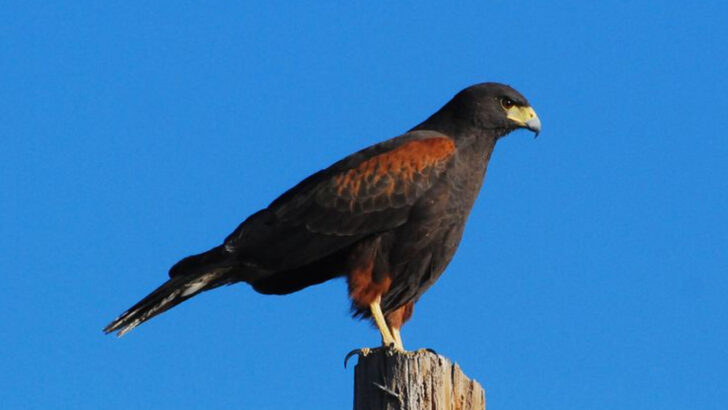The desert may seem like an unlikely place for life to thrive, but the Southwest is home to some of the most fascinating and resilient birds you’ll ever encounter.
From the striking colors of the roadrunner to the haunting call of the cactus wren, these birds have adapted to survive in one of the harshest environments on Earth. Each one is a marvel of survival and beauty, perfectly in tune with the desert’s unforgiving landscape.
These feathered wonders are as bold as the land they inhabit. With every swoop and flutter, they make the desert come alive with color, song, and spirit.
If you’re ready for an adventure in the wild heart of the Southwest, keep your eyes peeled. The desert birds are waiting to make their mark on your journey.
Gambel’s Quail
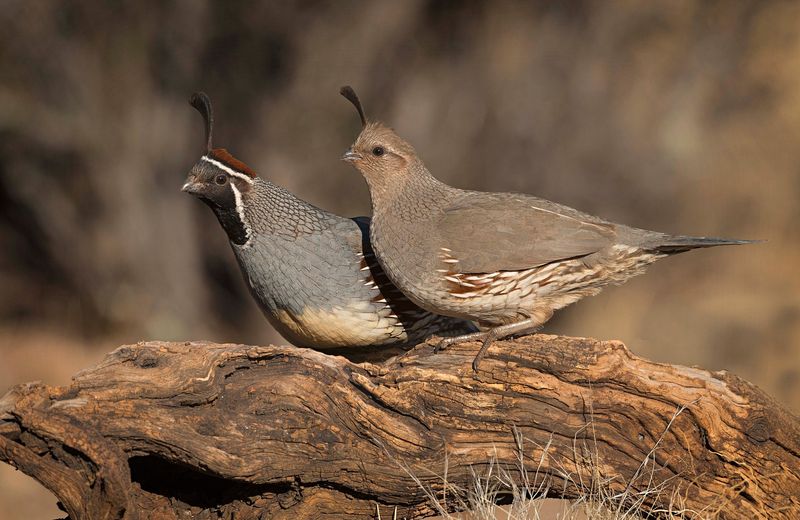
Gambel’s Quail are charming birds found across the Southwest desert. Their distinctive topknot and intricate plumage patterns make them a sight to behold. Often seen in coveys, they forage on the ground, picking seeds and insects.
These birds are particularly active during the cooler parts of the day, moving swiftly through the underbrush. Their calls, a series of clucks and chirps, echo across the arid landscape. Watching a family of quails scurry across the desert floor is a delightful experience for bird enthusiasts and casual observers alike.
Greater Roadrunner
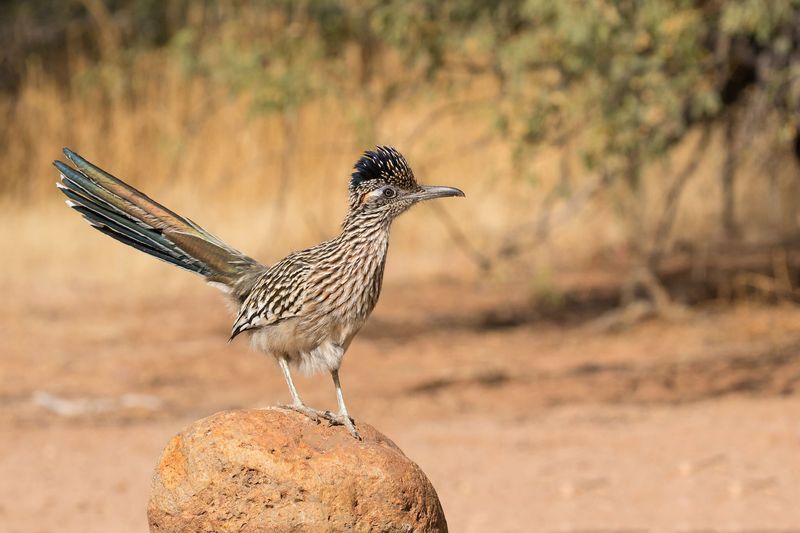
The Greater Roadrunner is an iconic symbol of the desert Southwest. Known for its speed and agility, this bird can reach impressive speeds on foot. Its striking appearance includes a long tail and expressive crest.
Roadrunners have an omnivorous diet, feeding on insects, lizards, and even small snakes. Their ability to thrive in harsh conditions demonstrates their adaptability. Spotting a roadrunner in its natural habitat, dashing across open spaces, is an unforgettable moment, reflecting the essence of the desert’s diverse wildlife.
Cactus Wren
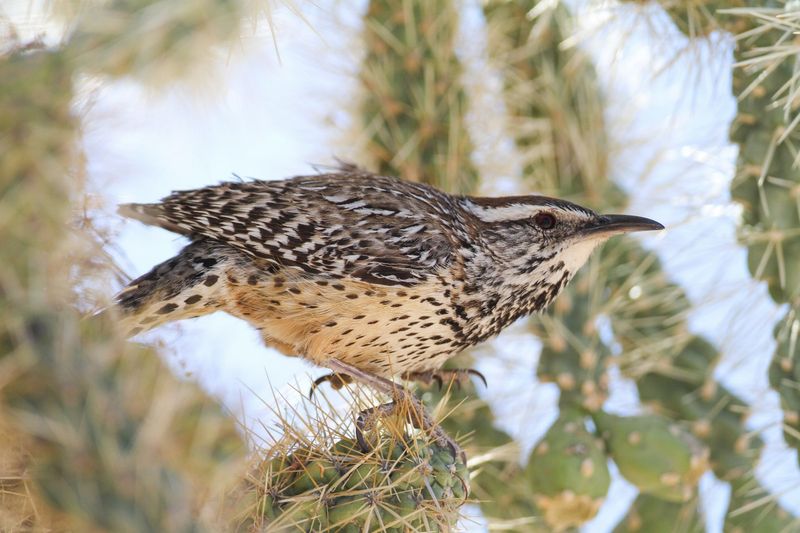
The Cactus Wren, the largest wren in the United States, is a true desert dweller. Its habitat includes saguaro cacti, where it builds large, conspicuous nests. The bird’s bold, white eyebrows and spotted plumage are distinctive features.
Adapted to survive with minimal water, Cactus Wrens are known for their loud, raspy calls. These social birds are often seen in pairs, actively foraging and defending their territory. Observing a Cactus Wren in its natural environment offers insight into the desert’s complex ecosystem and the species’ fascinating behaviors.
Verdin
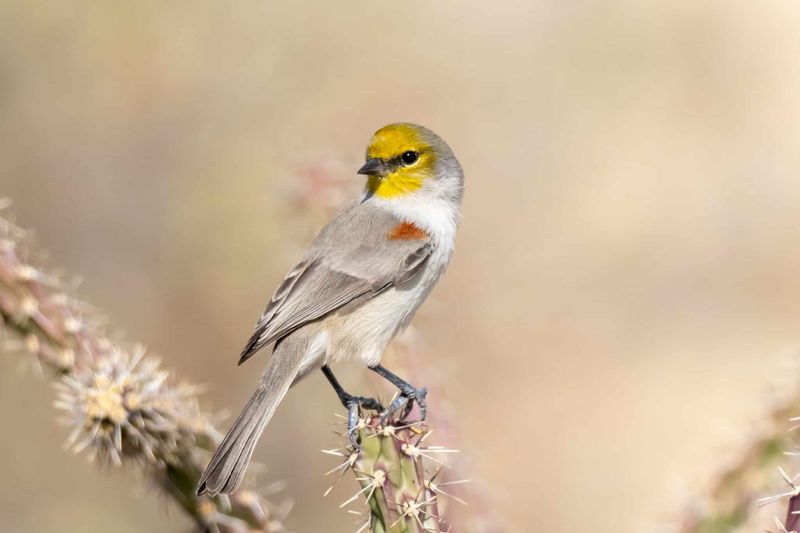
The Verdin is a small but striking bird, often seen flitting among desert shrubs. Its bright yellow head sets it apart from other desert birds. Verdins are known for their intricate nests, which resemble large balls of twigs.
These tiny birds are active and resourceful, adept at finding food and shelter in arid environments. They feed on insects and occasionally nectar, showcasing their adaptability. Observing a Verdin in the desert offers a chance to appreciate the small wonders that thrive in this challenging habitat.
Phainopepla
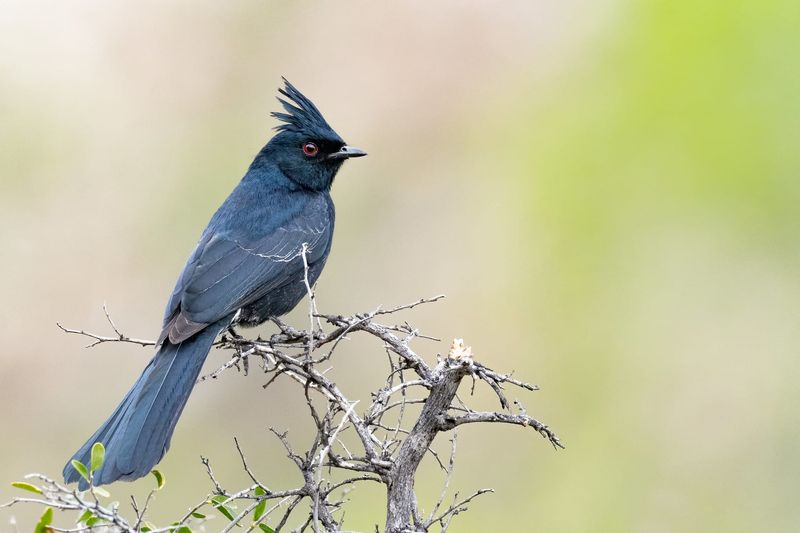
The Phainopepla is a captivating bird with glossy black feathers and striking red eyes. Males are particularly noticeable with their sleek appearance, while females have more subdued plumage.
These birds are often found in desert washes and mesquite thickets. Their diet mainly consists of berries, particularly mistletoe. Phainopeplas are known for their graceful flight and melodic songs. Spotting one at dusk, silhouetted against the desert sunset, adds a touch of magic to the arid landscape. Their presence signifies the intricate beauty of desert life.
Harris’s Hawk
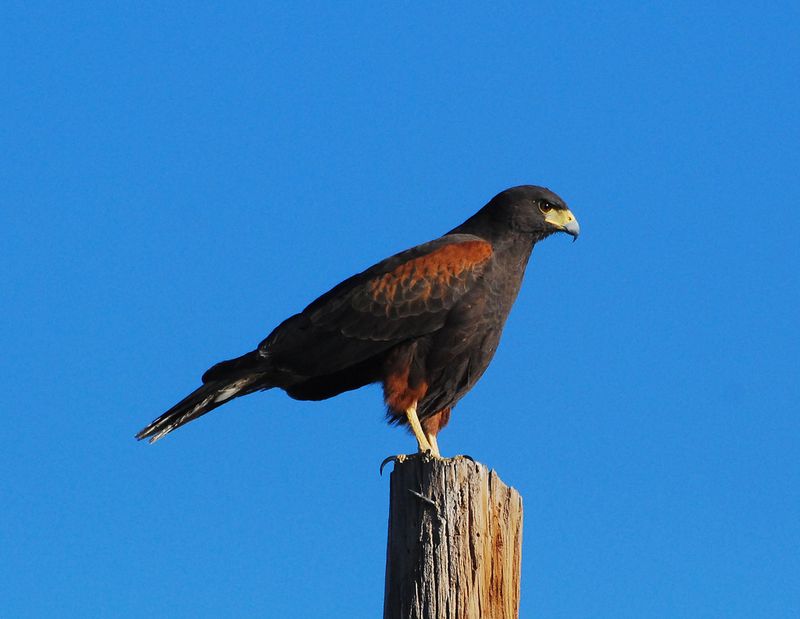
Harris’s Hawk is a striking raptor known for its cooperative hunting strategies. These birds hunt in packs, a rare behavior among raptors, which increases their hunting success.
With their dark brown plumage and distinctive rusty-red shoulders, they are easily recognizable. Harris’s Hawks often perch on tall cacti or utility poles, scanning the desert for prey. Their social nature and adaptability make them a fascinating subject for birdwatchers, showcasing the dynamic interactions within the desert’s avian community.
Costa’s Hummingbird
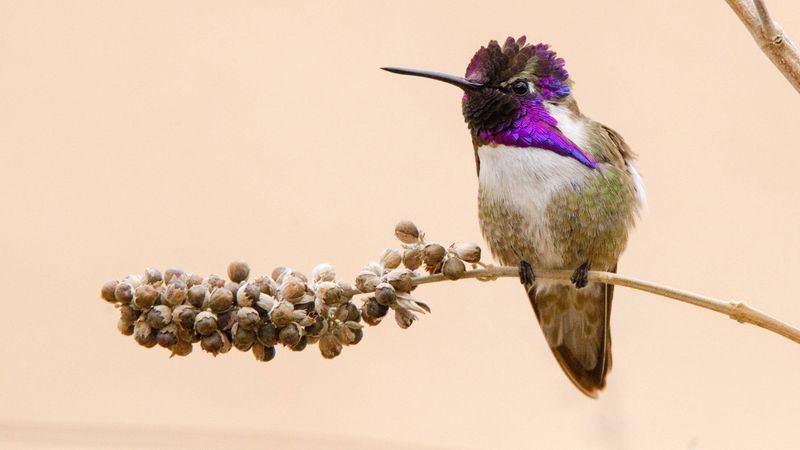
Costa’s Hummingbird is a dazzling sight in the desert, particularly the male with his vibrant purple throat and crown. These tiny birds are agile flyers, often seen darting between flowering plants.
Their diet consists mainly of nectar, supplemented by small insects. Adapted to the desert climate, Costa’s Hummingbirds are often found in arid scrublands and cactus-rich areas. Observing their aerial acrobatics and iridescent plumage offers a glimpse into the delicate yet resilient nature of desert wildlife.
Elf Owl
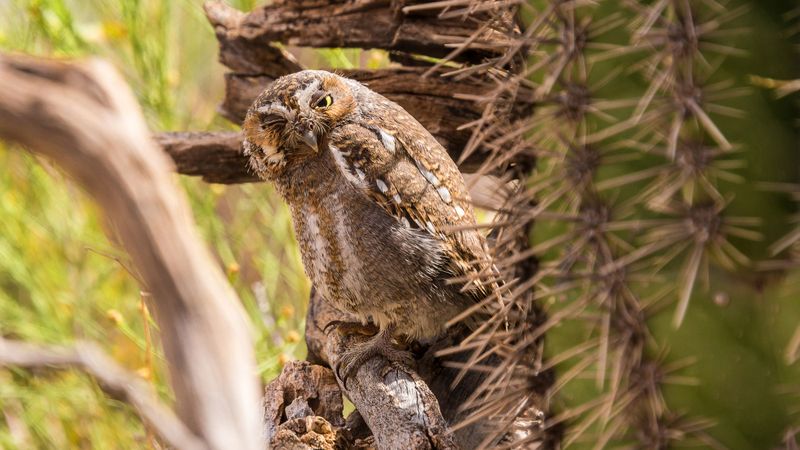
The Elf Owl, one of the smallest owls in the world, is a nocturnal desert inhabitant. Its diminutive size allows it to nest in old woodpecker holes within cacti, offering protection.
With a diet consisting mostly of insects and small invertebrates, Elf Owls are adept hunters. Their soft, hooting calls are often heard during the cool desert nights. Spotting this tiny owl requires patience and a keen eye, but the reward is witnessing one of the desert’s most endearing creatures in its natural setting.
Gila Woodpecker
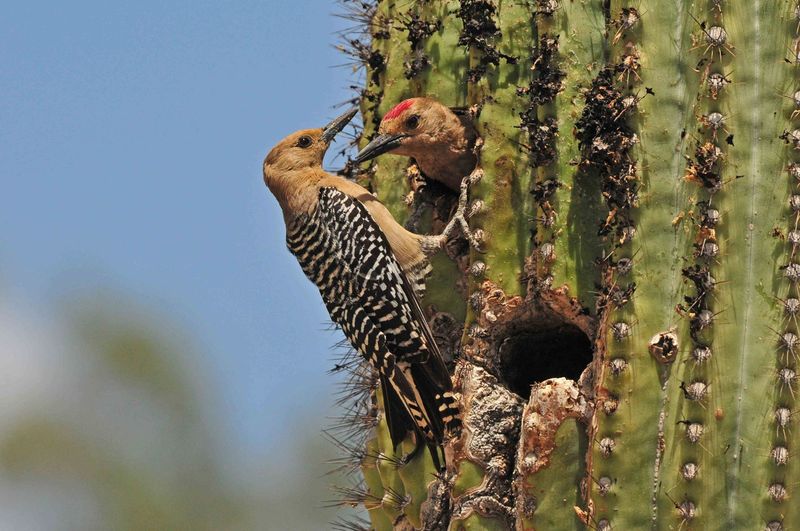
The Gila Woodpecker is a common sight in the desert Southwest, often seen clinging to saguaro cacti. With its distinctive black and white barred back and red cap, it’s easily recognizable.
These woodpeckers play a crucial role in the ecosystem by creating nesting cavities used by other species. Their diet includes insects, fruits, and nectar, showcasing their adaptability. Observing a Gila Woodpecker pecking at a cactus is a testament to the intricate relationships between desert flora and fauna, highlighting the interconnectedness of this unique landscape.
Pyrrhuloxia
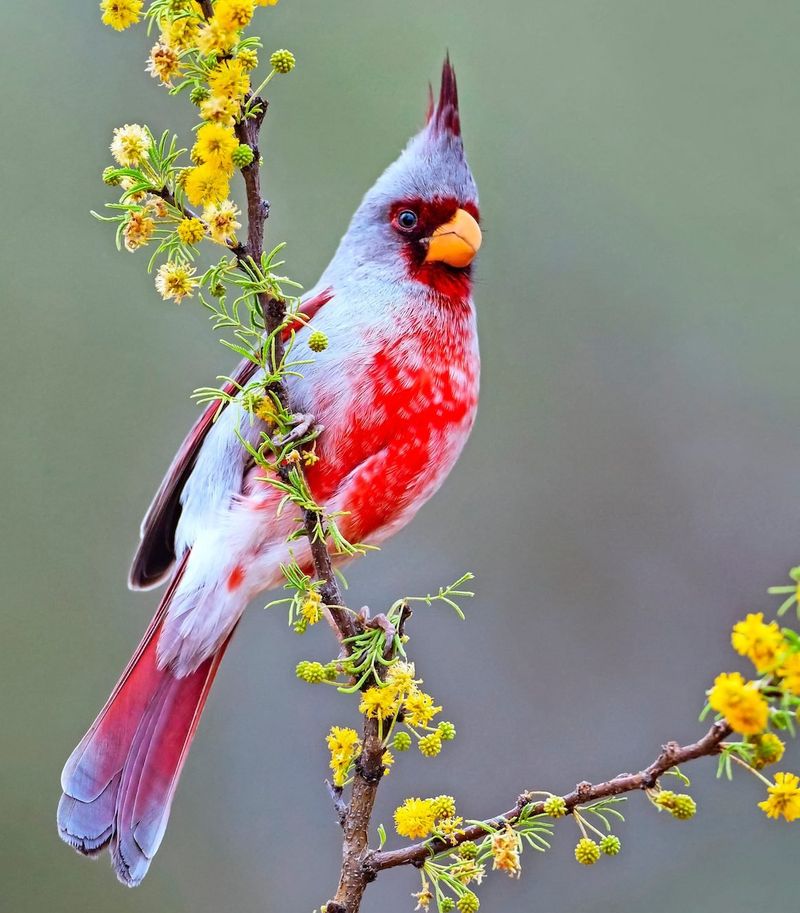
The Pyrrhuloxia, often called the “desert cardinal,” is a distinctive bird of the desert Southwest. Its gray body and vivid red accents make it a striking sight against the arid landscape.
These birds are often found in brushy desert areas, feeding on seeds and insects. Their melodious songs are a common sound in their habitat. The Pyrrhuloxia’s adaptability to dry conditions, along with its vibrant appearance, makes it a fascinating subject for bird enthusiasts exploring the desert.
Curve-billed Thrasher
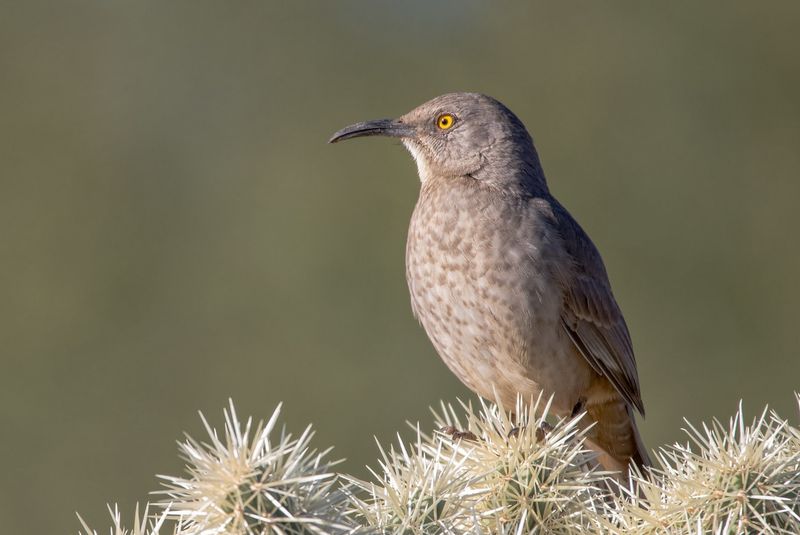
The Curve-billed Thrasher is a curious bird known for its inquisitive nature and distinctive long, down-curved bill. Found throughout the desert, it’s often seen foraging on the ground.
These birds are skillful diggers, using their bills to uncover insects and seeds. Their calls, a series of sharp “whit-wheet” sounds, are easily recognizable. Observing a Curve-billed Thrasher navigate its harsh environment offers insight into the resourcefulness and adaptability required to thrive in the desert.
Black-throated Sparrow
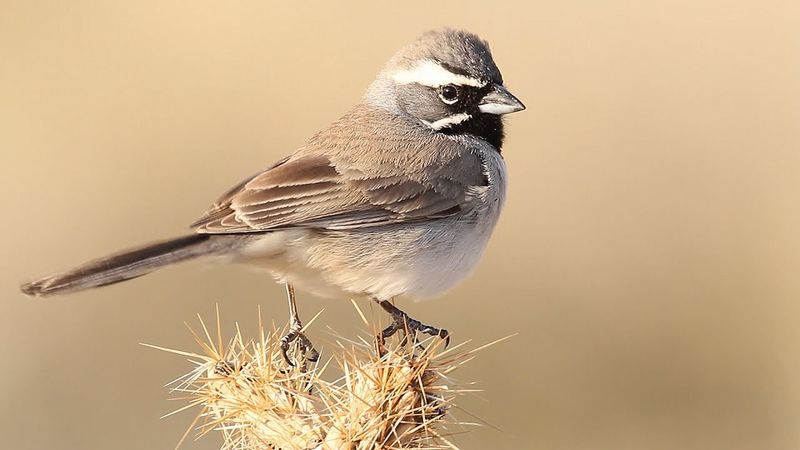
The Black-throated Sparrow is a small but striking bird, easily recognized by its black throat and white facial markings. It thrives in the arid desert environment, often seen perched on low shrubs.
These sparrows are ground foragers, feeding on seeds and insects. Their melodious songs fill the desert air during the breeding season. Observing a Black-throated Sparrow in its natural habitat highlights the diverse avian life that calls the desert home, showcasing nature’s beauty and resilience.
Scott’s Oriole
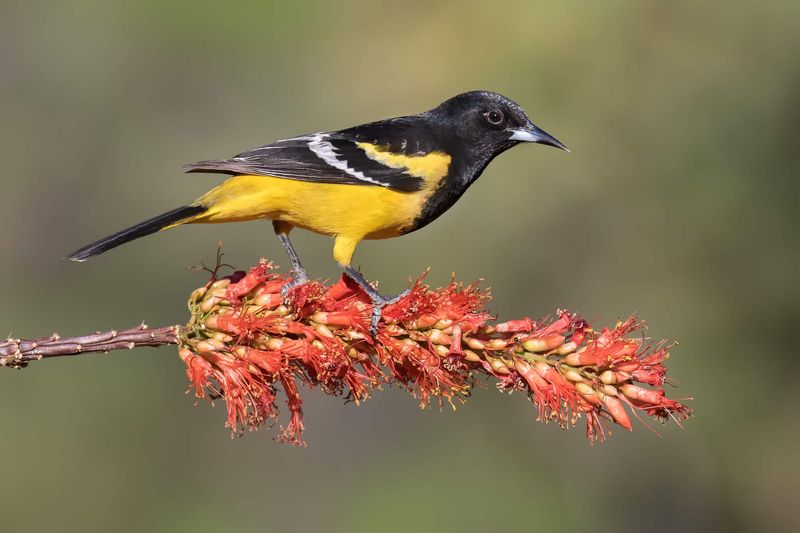
Scott’s Oriole is a vibrant bird that adds a splash of color to the desert landscape. Males are particularly eye-catching with their bright yellow bodies and contrasting black heads.
These orioles are often found in areas with yucca and agave plants, where they forage for insects and nectar. Their sweet, melodious songs are a signature sound of the desert. Observing Scott’s Oriole in its natural environment is a delightful experience, offering a glimpse into the colorful tapestry of desert birdlife.
Burrowing Owl
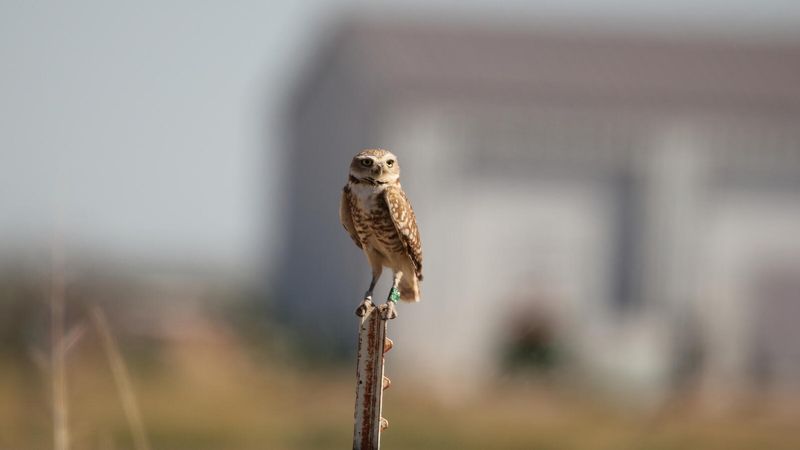
The Burrowing Owl is a unique desert resident, known for its ground-dwelling habits. These owls inhabit burrows, often repurposing those made by mammals, offering shelter and protection.
With large yellow eyes and a distinct facial disc, they are easily recognizable. Burrowing Owls are diurnal, active during the day, and their diet includes insects and small mammals. Observing a Burrowing Owl standing vigilantly at its burrow provides a captivating glimpse into the life of one of the desert’s most intriguing avian species.
Ladder-backed Woodpecker
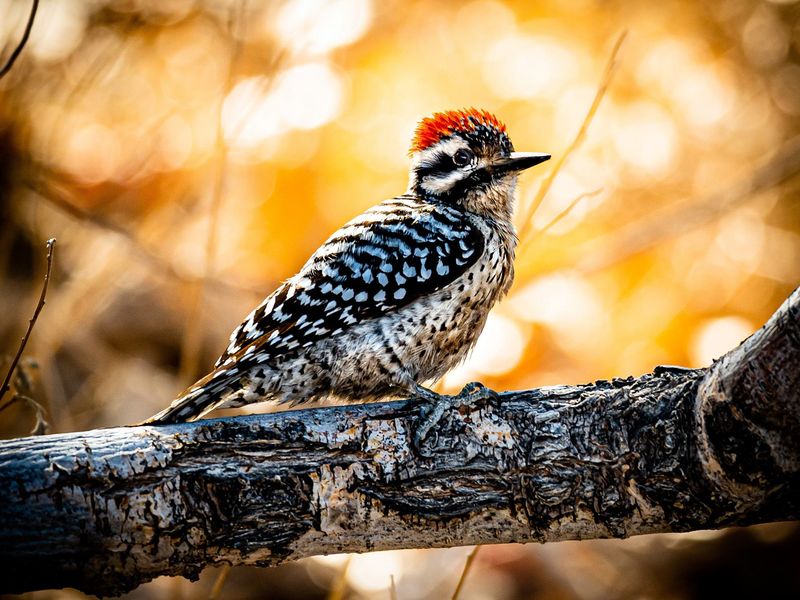
The Ladder-backed Woodpecker is a frequent visitor to desert woodlands, known for its distinctive ladder-like black and white pattern on its back. Males feature a noticeable red crown, adding to their striking appearance.
These woodpeckers favor arid regions with abundant cacti and mesquite trees. They peck tree trunks in search of insects, showcasing their adaptability. Observing a Ladder-backed Woodpecker at work is a testament to the intricate balance of nature in the desert, highlighting the importance of these birds in controlling insect populations.
Say’s Phoebe
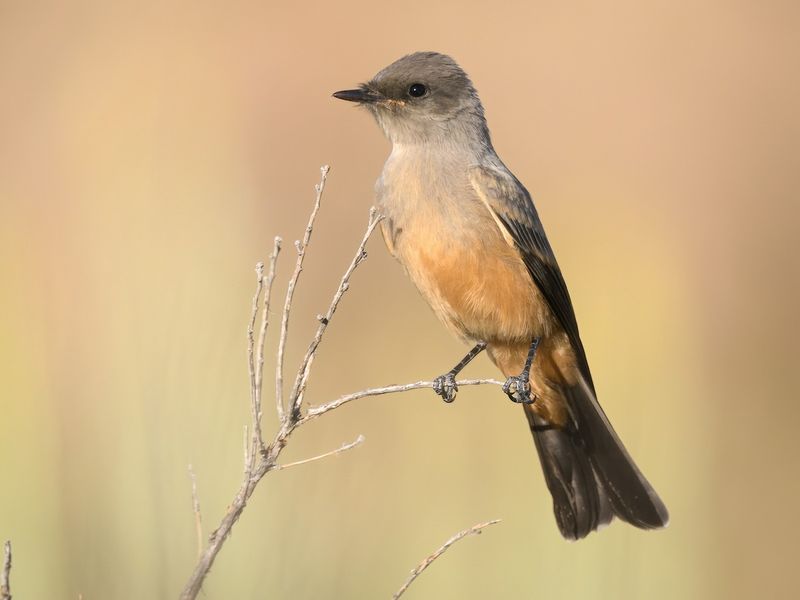
Say’s Phoebe is a slender, graceful bird commonly found in open desert habitats. It is easily recognized by its soft brown and orange plumage, a muted yet beautiful combination.
These birds are agile hunters, often seen swooping down to catch insects mid-air. Say’s Phoebe adapts well to human presence, occasionally nesting on buildings and structures. Observing this bird in its desert environment showcases its elegance and adaptability, offering insights into the harmonious coexistence of wildlife and human developments in arid regions.
White-winged Dove
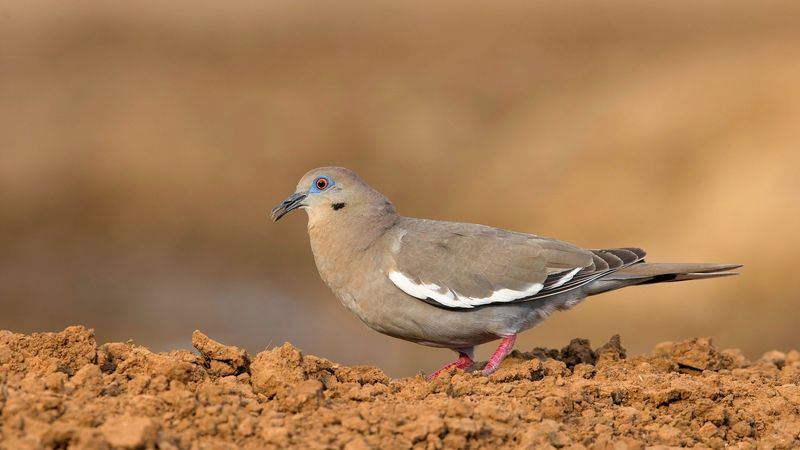
The White-winged Dove is a common and elegant bird of the desert, recognizable by its distinctive white wing patches. These doves are often seen perched on trees or foraging on the ground.
Their diet primarily consists of seeds, making them frequent visitors to bird feeders in desert communities. The soft cooing calls of White-winged Doves are a familiar sound in the desert, marking the rhythm of daily life. Observing this species offers a glimpse into the diverse birdlife that thrives in arid environments, highlighting the interconnectedness of all desert dwellers.
Ash-throated Flycatcher
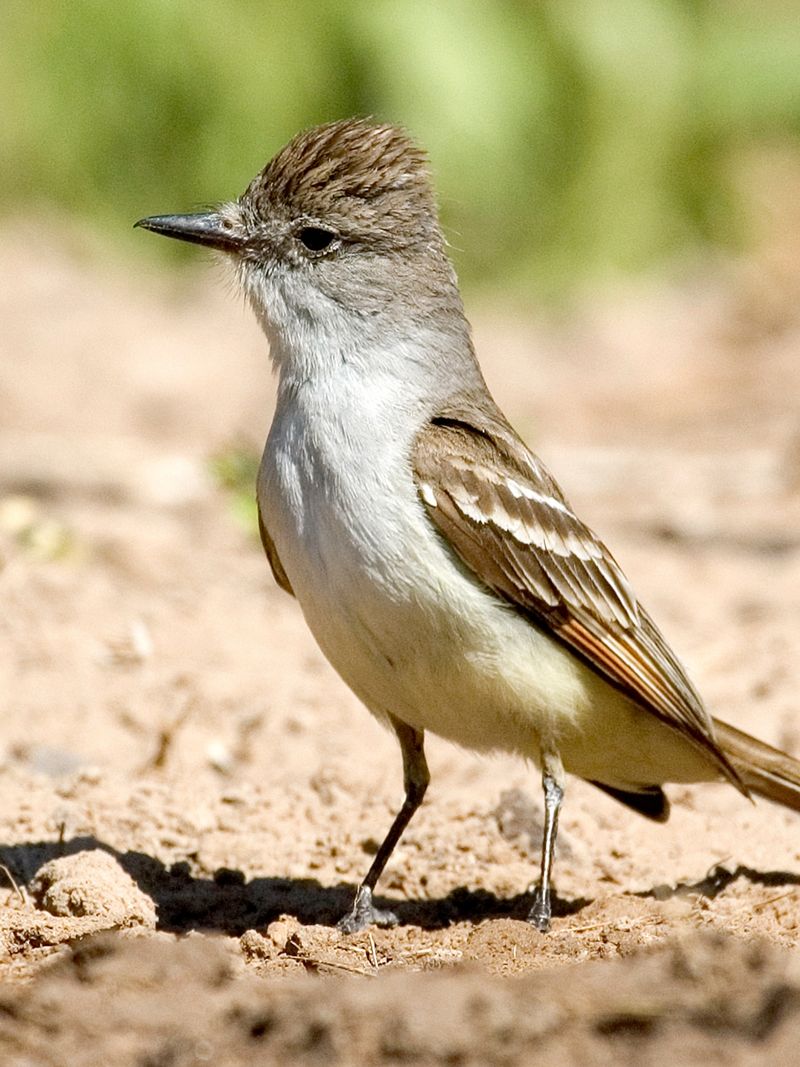
The Ash-throated Flycatcher is a subtle yet striking bird, often found in open desert and scrub habitats. Its pale yellow belly and ash-colored throat make it distinguishable from other flycatchers.
These birds are adaptable, nesting in natural cavities and human-made structures. Their diet consists mainly of insects, which they catch mid-flight with dexterity. Observing an Ash-throated Flycatcher in its natural setting is a testament to the adaptability and resourcefulness of desert avian species, highlighting the intricate balance of life in arid environments.

